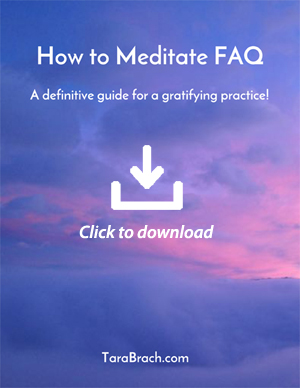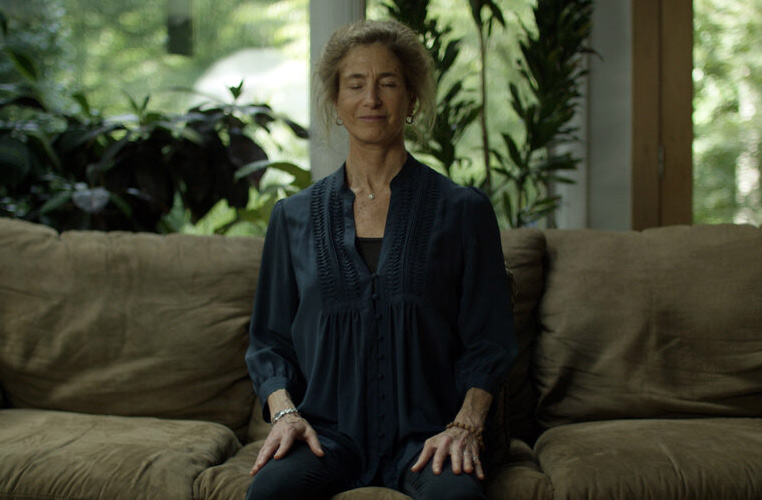See also: Resources for Working with Pain
Working with Pain – Summary of Mindfulness Strategies
At one time or another, we will all want to learn how to use our meditation practice to work with pain. There is no literal, paint-by-numbers prescription for relating to pain; however, there are several important teachings and skillful awareness practices to consider when working with pain and unpleasant sensations.
Key Teaching: Pain is inevitable; suffering is optional.
• Anything we bring awareness to deepens our presence and freedom. Because pain is an inevitable and frequent visitor, the intention to let this be a gateway to awakening will powerfully energize your path.
• Relating to pain with curiosity and kindness directly transforms your experience into a pathway of freedom.
• When we resist pain – by physical tensing, emotional reactivity, mental judgment or behavioral avoidance – our identity, becomes linked with it. We are the victim of pain. Pain is the enemy. Resisting turns unpleasantness into suffering. This is sometimes presented as an equation: Pain x Resistance = Suffering.
• Awareness is the antidote to suffering. By purposefully bringing a kind and mindful attention to pain and the resistance to pain, the identification that creates suffering is dissolved.
Strategies:
What follows is a range of strategies for finding balance and presence in the midst of challenging sensations:
Mindfulness of Sensations: Rather than the term pain, consider your experience as an unpleasant constellation of sensations. With this in mind, purposefully attend to the changing sensations of moment-to-moment experience. This means bringing a clear, allowing, investigative, kind presence to the unpleasant sensations, and to the physical resistance around the most intense sensations. Be aware of the ways the sensations change: increasing or decreasing intensity; spreading or consolidating; becoming more hard or soft, heavy or light, or other related kinesthetic experiences (texture), or visual experiences (color) that are predominant.
If the sensations are intense, you might approach contact slowly and gently, deepening your attention a little at a time so you don’t feel overwhelmed.
If mindful presence is strong, you may notice that sensations are unfolding in an allowing space of presence. Rather than feeling identified with and oppressed by pain, it can feel as if unpleasant sensations are floating in a spacious awareness.
Mindfulness of Attitude: How are you relating to pain? Is there a receptive presence? Is there interest and kindness? Or is there reactivity? Notice if you are pushing away the pain with either physical contracting or mental aversion. Is there judging? You might ask yourself: Am I feeling oppressed? Victimized? Am I afraid it will get worse? Afraid it means I’m seriously sick? Am I angry at my body for letting me down?
If you become aware of physical, mental or emotional reactivity to the pain, then include that too in a kind, clear attention. There’s no value in resisting or fighting aversion to pain, you can trust that your awareness itself will open you to a space of more balance and freedom.
Often, simply checking the attitude weather can increase presence, space and freedom in responding to the unpleasantness.
Take it Moment to Moment: Ask yourself: How bad is it in this moment? Is it tolerable? Take each moment as it comes, instead of predicting how it will feel in the next moment. Often, it’s the idea of the future that creates resistance. You might tell yourself: Just this moment or Just these few moments. Or you might set a short limit: Just these next 10 breaths, being with sensations. Then, if it’s still tolerable, move on to the next 10 breaths, and so on.
Resourcing: Resourcing is simply moving one’s attention away from the strong sensation to a pleasant or neutral area in the body, to something pleasant or neutral that is external to the body, or to an image, message, or memory that gives a sense of ease and safety. This aids the sympathetic nervous system in helping the body to relax and, in a deep way, we realize that what we are is larger – the ocean – and pain is waves.
Titrating and Pendulating: Titrating, when working with physical or emotional pain, means contacting just a little of the felt-intensity at a time. This allows you to include and integrate the experience in a stable, mindful way.
To titrate, you first set up a resource anchor, such as a place in the body where you feel neutral and/or pleasant sensations. Then you pendulate – go back and forth – between the pain and your chosen resource.
You might consider unpleasant sensations as Domain 1 and neutral and pleasant sensations as Domain 2. Take some time to notice an area within your body that is not filled with unpleasant sensation, and establish a mindful presence in Domain 2. Naturally, you will be drawn to the unpleasant sensations; simply notice that and arrive again in the domain of neutral or pleasant sensations. As you find some stability there, gradually explore, with mindfulness, the unpleasant sensations in Domain 1. Sense how staying connected with Domain 2 (returning over and over) helps create more space and ease in relating with Domain 1.
The Resource of Space: Consider this: A heaping tablespoon of salt in a 4 oz. glass of water offers a very salty experience – the same heaping tablespoon of salt in a lake, not so much.
One way of sensing more space is by becoming aware of a larger set of phenomena than just the area of physical pain. For instance, the touch of air on your skin, the touch of clothing, sounds, colors, or the dance of shadows with the dappling sunlight. Essentially, you are increasing the number and nuance of phenomena that you are directly experiencing, thus diluting the strong sensation. It becomes one of 30+ phenomena as opposed to the center of the known universe.
You can titrate and pendulate using your breath and the resource of the open space around you. Breathe in and gently contact the area of pain. With the outbreath, imagine letting go into the boundless space around you. Gradually, you will be able to experience the space bathing and infusing the sensations, allowing them to move more freely and the identification with them to loosen. Alternately, you will notice the sensations releasing into space and floating more freely there. Eventually you’ll find that this infusing and dissolving are the same – and that there can be unpleasantness without suffering.
Extending on this, by using your imagination, visual attention and listening, you can reconnect to the space that is always here, within and around you. This usually begins by attending to external space – perhaps by utilizing a soft far mountain gaze or listening to sounds and sensing the space in which they are happening. You can then sense that space within you and sense that there is a soft space of awareness around the strong sensations. Imagine that sensations are floating in that space. With some training, it is possible to begin to sense the space inside sensations. Just as there is vast space inside an atom, within all cells and within all mass, there is vast space inside sensations as well. Inner and outer space are actually continuous space. Remembrance of space shifts and eases your relationship with intense sensations.
Offer Loving Kindness: The recognition that this hurts, or I am suffering can elicit a softening and opening of the heart. When a two-year-old comes to us crying, we might simply give them a hug and some tender loving care. When we recognize that we are hurting and our heart opens like a gentle soothing embrace to ourselves, we experience increasing freedom. Experiment with sending gentle currents of care to the places of unpleasant sensations and to any layers of reactivity to the unpleasant sensations.
When the Going Gets Really Tough: Turning away from the pain and intentionally resourcing as described above can be necessary when we feel strongly contracted, off balance, and are reacting to strong pain.
For some people, it is helpful to resource by focusing and relaxing with the inflow and outflow of the breath. You might let your breath be long, slow and deep, and match the length of the in-breath and out-breath without pausing in between. This kind of directed breathing – called coherence breathing – calms the nervous system and can help you to relax with what’s happening.
Sometimes it is wise to fully shift gears and engage in another activity. Pain can be exhausting to work with and you might need a break, a chance to regain some resilience and perspective, some humor and balance. Reading, watching a movie, doing light manual work, or listening to music are all ways of distracting or redirecting the attention. Yet, not all ways of shifting attention are equal. Some actually help move you toward balance – such as a walk in nature or time with a friend. Others simply distract the mind and give you a space without pain. While these distractions can be temporary skillful means, they may be overused. When you become habituated to distraction, your senses, heart and natural intelligence are closed off. Life becomes smaller and less vibrant.
Naturally, it is part of a compassionate response to take appropriate care of yourself – medically and otherwise. If you need to call 911, tap the numbers mindfully.J
Inquiry: Who or What is Feeling Pain? When you have some balance and presence in midst of pain, it can be revealing to inquire: Who or what is aware of these sensations? Can you sense that sensations are just happening – not to someone, not owned by someone? This inquiry loosens our identification with pain, and reveals that sensations, like all phenomena, is inherently empty of self.
Resources
Below are some resources that you may find helpful in building your understanding of how to work with pain:
Audio: The Dance with Pain – Tara Brach
“Pain is inevitable and suffering is optional.” In this talk Tara explores the difference between pain and suffering and examines the most common, yet often unconscious, ways we resist pain. She then shares practices that help us find balance, equanimity and awakening in the midst.
Audio: Guided Meditation: Radical Acceptance of Pain – Tara Brach
Audio: How to Transform Your Relationship with Pain – Jonathan Foust
This talk explores strategies to help you shift how you relate to pain and physical discomfort. You’ll learn what the Buddha taught about being with physical distress, how discovering your reactive patterns can reduce unnecessary suffering and how to apply specific techniques that can help you use unpleasant sensations as a transformative practice.
PDF: My Path with Arthritis – Darlene Cohen is a Zen priest in the lineage of Suzuki Roshi and has a graduate degree in physiological psychology. She is the author of Turning Suffering Inside Out and works with groups dealing with physical and/or psychological pain.
Audio: Working With Pain, Bhikkhu Bodhi describes his personal experiences with severe chronic pain since the 1970’s and discusses ways to work with and manage pain.
Book: How to Be Sick: A Buddhist-Inspired Guide for the Chronically Ill and their Caregivers, by Toni Bernhard (Wisdom Publications, September 2010). “Until forced to retire due to illness, I was a law professor for 22 years at the University of California – Davis, serving six years as the law school’s dean of students. I had a longstanding Buddhist practice and co-led a weekly meditation group with my husband. Forced to learn to live a new life, I wrote. The book is Buddhist-inspired but is non-parochial. The tools and practices in it are intended to help anyone.”
Book: The Open-Focus Brain: Harnessing the Power of Attention to Heal Mind and Body, by Les Fehmi, describes how the quality of our attentive awareness affects well-being. It includes guided meditations on a CD that support a less fixated, more expansive way of being in the world thus promoting healing of all sorts. It’s an excellent example of the growing wave of secular dharma offerings.
Book: The Healing Power of the Breath: Simple Techniques to Reduce Stress and Anxiety, Enhance Concentration, and Balance Your Emotions – Brown and Gerbarg


